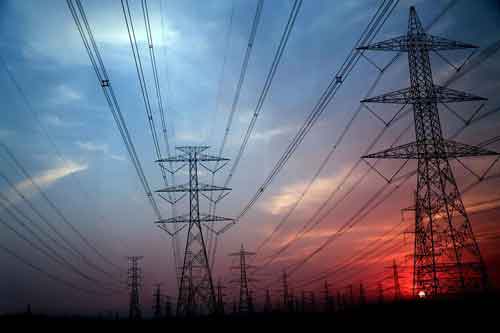New transmission lines: Worth the high cost?
By Knight Ridder Tribune
Arc Flash Training CSA Z462 - Electrical Safety Essentials
Our customized live online or in‑person group training can be delivered to your staff at your location.

- Live Online
- 6 hours Instructor-led
- Group Training Available
The state is in a headlong rush to extend its electric transmission system. But with an estimated cost of more than $10 billion - at least $500 for every man, woman and child served by the Texas power grid - some are questioning how much is too much.
"It's excessive," said Geoffrey Gay, a lawyer who represents Fort Worth and other North Texas cities in utility matters. "We need additional transmission... but $10 billion over the next few years is excessive by any stretch of reasoning. There needs to be a much more thoughtful analysis as to how much the consumer ought to bear."
Proposals are now before regulators and transmission planners to add $1 billion in transmission lines so a South Texas electric company can connect to the state's principal power grid, at least $3.5 billion in lines to get access to more wind power and about $6 billion to reduce congestion on the expanding grid.
Not all that construction is certain. Some is in the planning stage, some could be canceled depending on regulatory action, and some is merely contemplated. But all told, it could double the part of the home electric bill associated with transmission lines, which can reach about $8.50 per month.
The contemplated construction also appears to have created a gold rush in the transmission market, with several new companies vying for a piece of the business. Instead of building in isolated service territories - the traditional model for transmission construction - the new companies are seeking permission to build throughout the state and across service territories.
Supporters say some of the new construction is inevitable. Texas is growing, and the public and policymakers have gotten behind renewable energy. But how much expansion is too much? What level of investment is necessary to ensure a reliable system and encourage economic growth? And will the costly new transmission lines be another burden on ratepayers already socked with higher bills as the state has deregulated electricity?
"The thinking generally is that it's more likely to have a competitive market if you have a more robust transmission system," said Michigan State University Senior Fellow Kenneth Rose.
He has produced annual reports showing that the price of electricity in Texas and other deregulated states has increased faster than in regulated states. "The idea is that as you make power available through access, the more likely you'll have competition in a given area," but that hasn't meant lower prices in Texas, he aid. "Transmission is expensive - it always has been," Rose said.
"There are right-of-way issues in the construction. It's possible that you have a higher cost, but the thinking is that the higher cost would be offset by the competitive benefits, and the jury is still out on that." The Electric Reliability Council of Texas, the operator of the Texas transmission grid, has proposed building about $6.1 billion worth of transmission lines over the next 10 years to reduce congestion.
Some of these lines are necessary because of the market change, and some might have been constructed without the move to deregulation - after all, the state is growing and needs more infrastructure. Under the old system, electricity typically moved within service territories, and transmission planning was coordinated by regulators and unified utilities. Now, electricity is transported across the state.
Additionally, owners of new generating plants have greater freedom to build them anywhere, and ERCOT generally is obligated to hook these sometimes far-flung plants to the grid. But Bill Bojorquez, vice president of system planning at ERCOT, says the construction of new lines in the deregulated market also will mean that power from more cost-efficient power plants can get piped to more places in Texas.
Power from the new plants can replace power generated by older, more expensive to operate plants, and the savings can help offset the new transmission costs. He said recent findings by ERCOT indicated that potential ratepayer costs associated with power line congestion declined from $400 million in 2003 to $250 million in 2005 - largely because of improvements in infrastructure.
"Also, transmission still remains a small percentage of the overall cost of doing business," he said. "And what do you get? You get to connect to newer and more efficient plants in the state. You get to serve growth."
Hooking up the growing number of wind power projects also can be especially expensive, with some estimates putting the price tag at $3.5 billion or more.
Skeptics have said that because wind power is inherently undependable, more thought should be given to shielding ratepayers from those costs. Otherwise, "we're creating obligations for ratepayers that will endure for years to come," said Gay, the utility lawyer.
But ERCOT's Bojorquez says that the use of wind power can also lead to savings by replacing power from more expensive generators. He said the organization had not yet completed an analysis as to whether such savings could offset the construction costs contemplated by recent Public Utility Commission decisions. The PUC is also mulling a plan by Entergy Gulf States to tie into the state grid that would result in about $1 billion in transmission lines being built.
Consumer groups generally oppose the plan, saying it will be another burden on ratepayers and will result in higher electric prices for everyone. But an Entergy spokesman said that it could mean about $100 million in savings each year due to increased efficiencies and that it would help bring more stability to the power grid.
BY THE NUMBERS
$6.1 billion: The cost of building new transmission lines over the next 10 years to reduce congestion on the state's power grid and to keep up with growth. About 3,295 circuit miles of lines would be built over the next five years.
$3.5 billion: The potential investment needed to connect contemplated wind power projects to the state grid, according to some estimates.
$1 billion: The cost of connecting customers of a southeast Texas power grid to the state's main power grid.
$8.50: The amount homeowners may pay each month to finance the state's transmission system. According to some projections, that charge could double as a consequence of the contemplated transmission projects.











